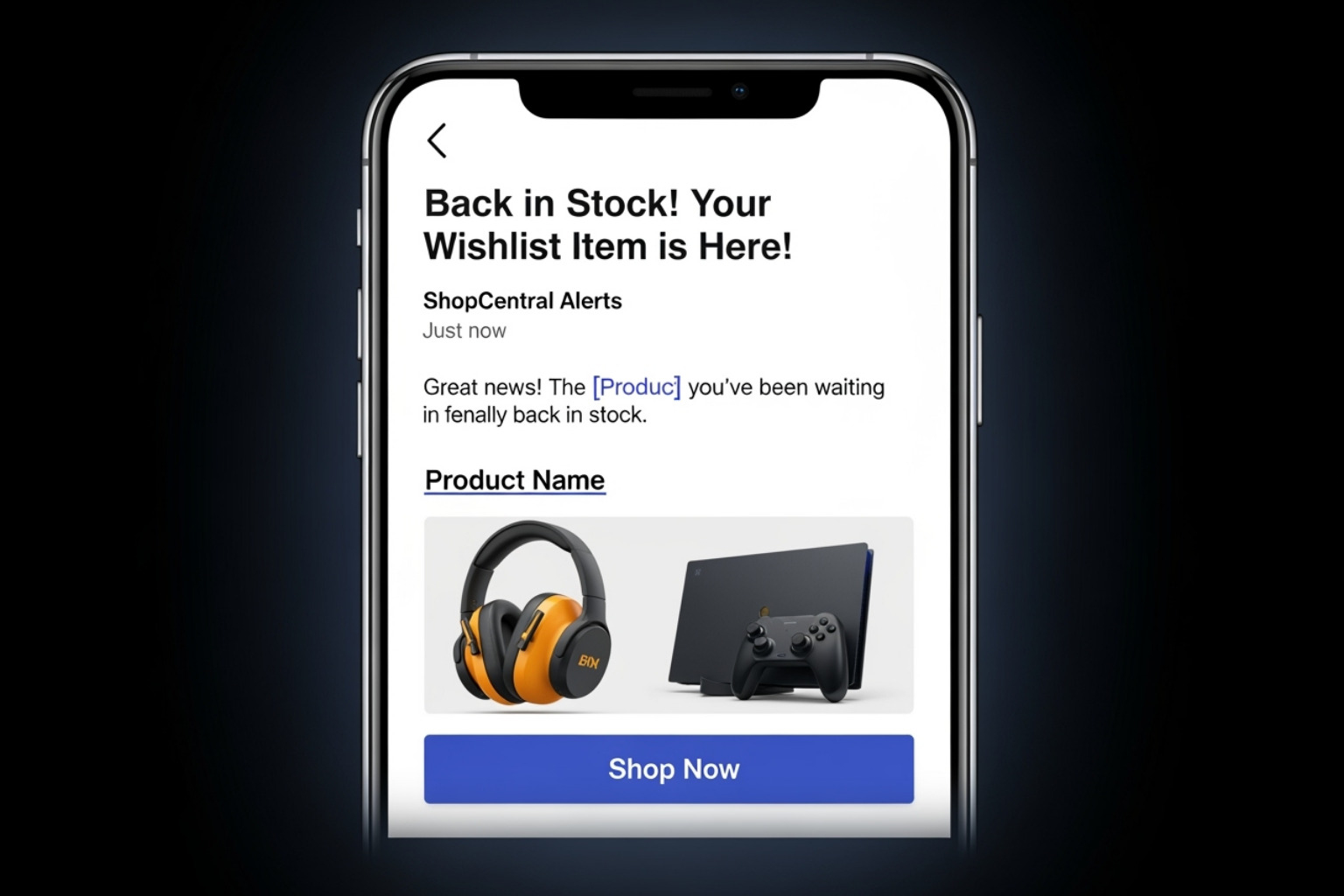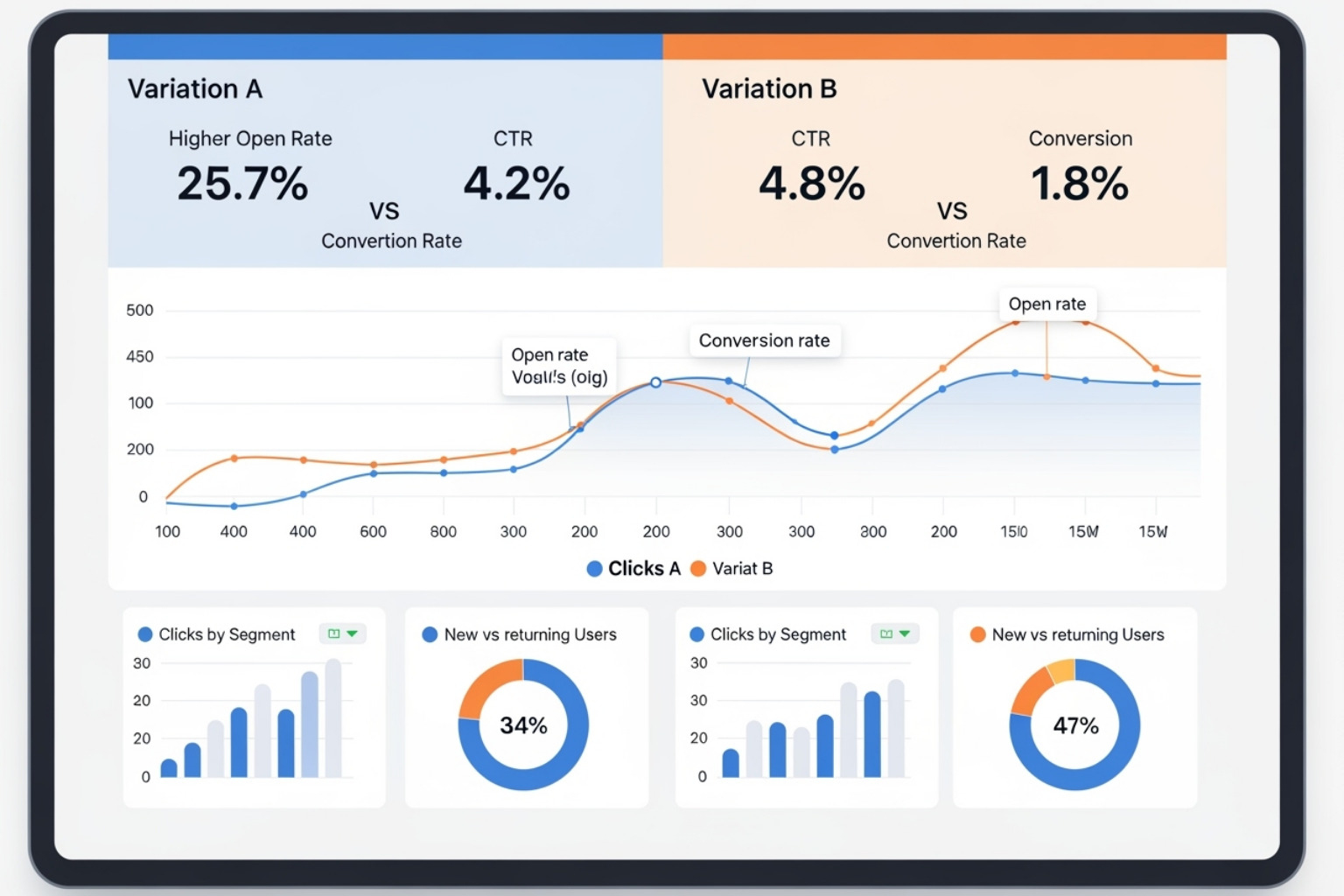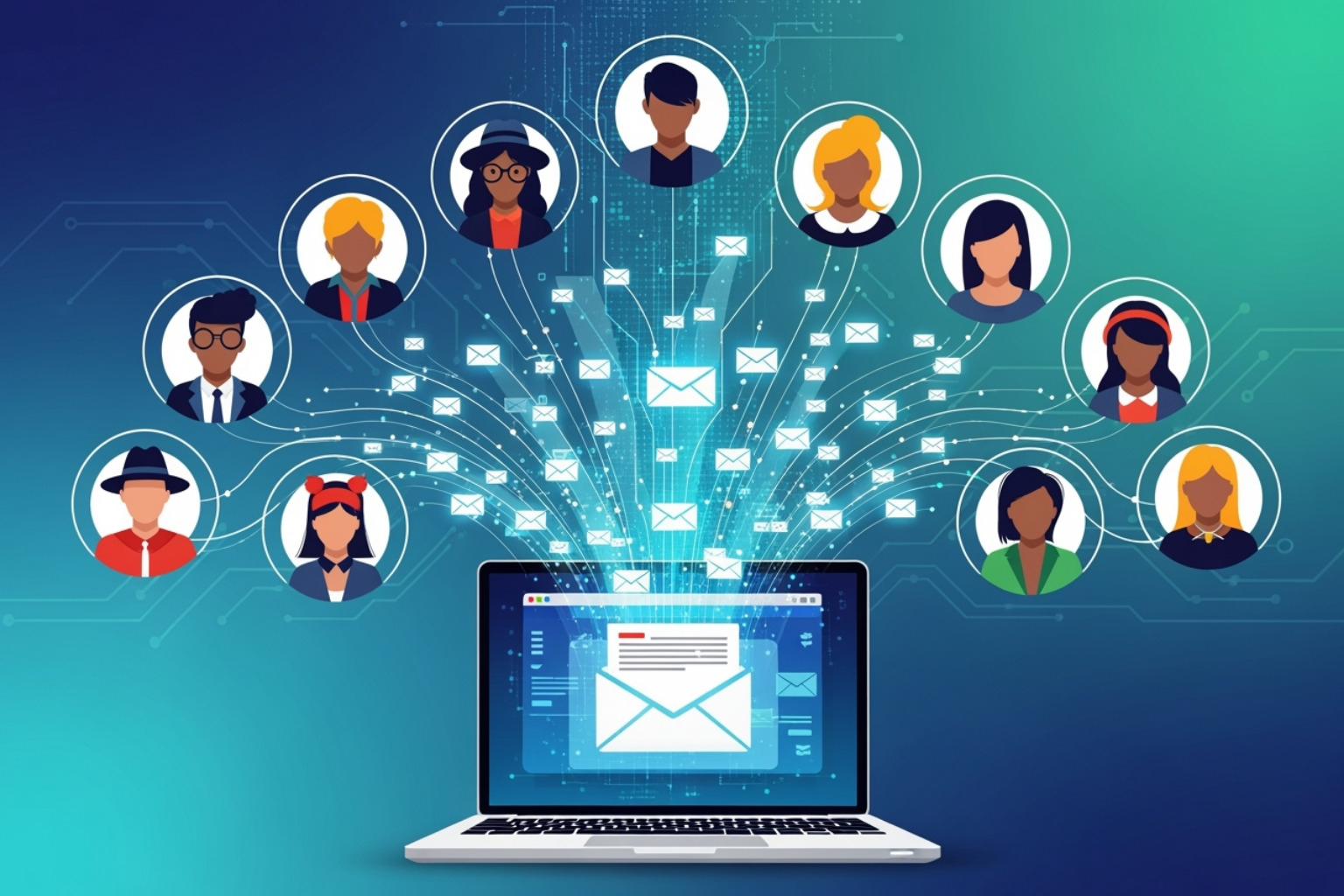Why Klaviyo Automated Emails Are Essential for E-commerce Growth
Klaviyo automated emails are messages sent automatically based on customer actions, like signing up for a newsletter or abandoning a cart. Unlike manual campaigns sent to everyone, these automated emails, or "flows," are triggered in real-time to deliver personalized messages at the right moment. This behavioral targeting is why they consistently outperform manual campaigns.
Here are a few key performance stats:
- Automated flows can generate significantly more revenue per recipient than one-off campaigns.
- Abandoned cart flows average $3.65 per recipient.
- Post-purchase emails have the highest open rates at 61.68%.
- Welcome flows average $2.65 per recipient.
For Shopify stores, automated emails are essential. They handle the repetitive but crucial touchpoints that build customer relationships and drive revenue 24/7, freeing you to focus on strategy and growth.
I'm Steve Pogson, founder of First Pier. With over two decades of e-commerce experience, I've seen how klaviyo automated emails can change a business's revenue and customer retention when used with a good plan. Let me show you which flows to prioritize and how to optimize them for maximum impact.

Handy klaviyo automated emails terms:
What Are Klaviyo Automated Emails and Why Do They Matter?
Imagine a team member who never sleeps and always knows the right thing to say to each customer. That's what Klaviyo automated emails provide: a system that responds to customer actions in real-time with personalized messages that feel like genuine conversations.
The main difference between automated emails and manual campaigns is timing and relevance. Manual campaigns send the same message to your whole list. Automated emails, however, are triggered by specific behaviors. When someone abandons their cart, a flow sends a reminder. When they make a purchase, another flow welcomes them. This targeted approach is why automation is so effective.
Here are the key benefits:
Saving time: Once you set up flows, they run themselves. This frees you up to focus on growing your business.
Increasing revenue: These emails reach people when they're most involved with your brand, which leads to higher conversion rates.
Improving customer experience: Relevant emails feel helpful, not pushy. A post-purchase email with care instructions or a back-in-stock notice shows you're paying attention to their needs.
Personalization at scale: Klaviyo uses customer data to customize content for thousands of people at once. Most consumers are more likely to buy from brands that deliver personalized experiences.
Building customer relationships: Each automated email is a touchpoint that strengthens the bond between your brand and your customers, building long-term loyalty.
While you focus on other parts of your business, these flows are always working to nurture prospects, recover sales, and delight customers. It's like having a marketing team that never stops.
For more insights on improving your e-commerce performance, check out more info about e-commerce analytics to see how data can drive even better results from your automated campaigns.
10 Essential Klaviyo Email Flows for E-commerce Growth
When I work with e-commerce businesses, we map out their Klaviyo automated emails strategy. It's like building the foundation of a house; you want to cover all the key touchpoints in the customer's experience. I've found ten flows that every e-commerce business needs.
These flows are revenue-generating machines that work around the clock, addressing specific moments when your customers need to hear from you.
- Welcome Series
- Abandoned Cart Recovery
- Browse Abandonment
- Post-Purchase & Transactional Emails
- Product Review & Feedback Requests
- Replenishment Reminders
- Back-in-Stock Notifications
- VIP & Customer Loyalty Emails
- Birthday & Anniversary Emails
- Win-Back & Re-engagement Series
Let's explore each of these flows.
Welcome Series

Your welcome series is your digital handshake. It should introduce your brand, convert subscribers into buyers, and set expectations for future emails. Most brands include a first-purchase incentive, like a 10% discount, to encourage the first sale. For example, candle brand Otherland uses their welcome email to share their story and offer a discount, making new subscribers feel special.
Abandoned Cart Recovery
This is one of the highest-impact flows. It targets people who added items to their cart but didn't complete the purchase. A typical series includes a simple reminder, an email with social proof, and a final message with a small incentive. Sportswear brand Montirex smartly changes its offers based on the cart value to avoid giving away unnecessary discounts.
Browse Abandonment
This flow targets visitors who looked at products but didn't add anything to their cart. The key is to be helpful, not pushy. You can recommend similar products or share customer reviews for the items they viewed. Shoe brand Charlotte Stone does this well by sending recommendations for other items a visitor might love, improving the shopping experience. This is why it's also important to focus on your e-commerce UX design.
Post-Purchase & Transactional Emails
Order confirmations and shipping updates are great opportunities to build trust and reduce buyer's remorse. These emails strengthen your brand and show excellent customer service. Olive oil brand Brightland turns order confirmations into brand experiences with visually appealing, friendly messages that make customers feel valued.
Product Review & Feedback Requests
User-generated content like reviews is powerful social proof. This flow asks for reviews after customers have had time to use their products. Compass Coffee incentivizes reviews with photos by offering a higher discount, which led to a huge increase in total reviews and valuable feedback.
For more on this, check out our insights on e-commerce community & loyalty.
Replenishment Reminders
For businesses with consumable products, these reminders are invaluable. The emails use timing to foresee when a customer might be running low and remind them to reorder. Who Gives A Crap, a toilet paper company, uses humor in their replenishment emails to stand out and make reordering feel convenient.
Back-in-Stock Notifications

Turn customer frustration about out-of-stock items into sales. These notifications alert customers the moment a product is available again, often creating urgency by mentioning limited quantities. Lifestraw, a water filter brand, uses these alerts to manage inventory and increase sales.
VIP & Customer Loyalty Emails
Reward your best customers with special treatment. These flows can offer exclusive deals, early access to new products, or special discounts to acknowledge their loyalty. Callie's Hot Little Biscuit automated VIP offers based on purchase frequency, which led to 157.8% year-over-year growth in revenue from automated flows.
Birthday & Anniversary Emails
Personal touches like birthday emails strengthen customer relationships. They feel thoughtful and keep your brand top of mind. Outdoor Voices sends half-birthday emails, a clever way to capture attention during a less crowded time.
Win-Back & Re-engagement Series
It's more cost-effective to reactivate dormant customers than to find new ones. Win-back flows target customers who haven't purchased in a while, offering incentives to bring them back. Printfresh uses novelty and attractive offers to draw inactive customers back. The key is to start somewhere, gather data, and keep improving these flows over time.
Setting Up and Optimizing Your Strategy
When setting up your Klaviyo automated emails, start simple and build smart. Focus on your foundational flows first: the welcome series, abandoned cart recovery, and post-purchase emails. These are the workhorses that will drive the most immediate revenue and involvement. Get the fundamentals right before building more advanced automations.
Once these core flows are running smoothly, you can add more sequences like browse abandonment and VIP loyalty flows. The real magic happens through continuous improvement. The most successful brands treat their automated emails like living systems that need regular attention and optimization. You'll want to analyze performance, test different approaches, and refine your messaging based on what your customers respond to. This iterative approach is key to great email marketing. If you're working on a broader e-commerce strategy, it's wise to look at your overall Shopify development to ensure everything works together.
The Role of Segmentation in Klaviyo Automated Emails
Segmentation is the engine that makes your automated emails feel personal and relevant. It allows you to divide your audience into meaningful groups based on their behavior and characteristics, so you aren't sending the same message to a first-time visitor and a loyal VIP customer.
Klaviyo's segmentation is powerful. You can group people by:
- Behavioral data: Products viewed, items added to cart, site visit frequency.
- Purchase history: First-time vs. repeat buyers, preferred product categories.
- Profile characteristics: Location, age, or other collected properties.
- Predictive analytics: Forecasts for next purchase date or churn risk.
This detailed segmentation powers personalization through features like conditional splits, which send different messages based on purchase history, and trigger splits, which customize content based on details like cart value. The more relevant your message, the better your results.
Writing Compelling Subject Lines
Your subject line is the gatekeeper to your email. If people don't open it, the content doesn't matter. The best subject lines are clear, concise, and personalized. Using a recipient's name or referencing their recent activity works well.
Creating urgency or curiosity can boost open rates, but it must be authentic. "Your cart expires soon!" is effective because it's genuinely time-sensitive. If you're offering a clear value, like a discount, mention it upfront. A/B testing your subject lines is a must, as what works for one audience may not work for another.
A/B Testing Your Klaviyo Automated Emails for Better Results

A/B testing is how you move from guessing to knowing what drives action. The golden rule is to test one variable at a time. If you change the subject line and the call-to-action, you won't know which change made the difference. Focus on one element, like the subject line, main image, discount offer, or send time.
Focus on metrics that matter for your test. For subject lines, that's the open rate. For content, it's click-through and conversion rates. Give tests enough time and a large enough audience to produce meaningful results. You can customize your A/B test parameters in Klaviyo to make sure the results are reliable.
The real value comes from learning from your tests. Understand why one version won, apply those insights, and keep testing. An email strategy is never-ending. The best part is that once you optimize a flow, those improvements compound over time, leading to significant revenue impact.
Frequently Asked Questions about Klaviyo Automation
I often get the same questions about Klaviyo automated emails from business owners. Let me clear up the most common points of confusion.
What is the difference between a Klaviyo flow and a campaign?
This is the most basic question. Think of it this way:
Klaviyo flows are automated. They are triggered by individual customer actions, like abandoning a cart or making a purchase. They work 24/7, sending personalized messages at the perfect moment. This is why they perform so well, with much higher click and conversion rates than campaigns.
Klaviyo campaigns are manual. You create a single message and send it to a group of people all at once, like a weekly newsletter or a flash sale announcement. They are great for broad promotions but don't react to individual behavior.
Both are important, but flows are your engine for consistent, automated revenue.
How many emails should be in a welcome series?
There's no single magic number. For most brands, 3-5 emails spread over the first week or two works well.
- Email 1 (Immediate): Thank them for signing up and deliver your welcome offer.
- Email 2 (1-2 days later): Tell your brand story or highlight what makes you different.
- Email 3: Showcase best-sellers or share customer reviews to build trust.
You can add more emails for more complex products, but the key is to provide value without overwhelming new subscribers. Test different lengths to see what works for your audience.
What are the most important Klaviyo flows to set up first?
If you're just starting, focus on these three core flows:
Welcome Series: This is your first impression. It's your chance to convert excited new subscribers into customers. Welcome emails generate some of the highest revenue per recipient.
Abandoned Cart Flow: This is low-hanging fruit. These customers were ready to buy. This flow can recover a significant amount of otherwise lost revenue, averaging $3.65 per recipient.
Post-Purchase Flow: These emails have incredibly high open rates (over 61%) because customers are expecting them. Use them to confirm the order, provide shipping updates, and build the relationship for the next purchase.
Once these three are working, you can expand to other flows. But these cover the most critical moments and will provide the biggest immediate impact.
To Sum Up: Put Your Email Marketing on Autopilot
After working with countless e-commerce brands, I can confidently say that Klaviyo automated emails are a game-changer. They are the foundation of a smart, scalable business that works for you around the clock.
Automation saves you time while creating consistent, personalized experiences for every customer. Your welcome series builds relationships, your abandoned cart flows recover lost sales, and your post-purchase sequences create loyal customers. All of this happens automatically once it's set up properly.
What's exciting about Klaviyo automated emails is how they become a true growth engine. While you focus on other areas of your business, your flows are nurturing leads and driving revenue in the background. It's like having a dedicated marketing expert who knows exactly what to say at the right time.
The key to success is to start smart. Begin with the welcome series, abandoned cart recovery, and post-purchase emails. Get those right with good segmentation and A/B testing. Then, you can gradually add more flows as you grow.
This is an ongoing process. The brands that see the best results are constantly testing and refining their flows based on performance data. Your email strategy should change along with your customers.
If you feel overwhelmed or aren't sure where to start, that's normal. Setting up a complete email automation strategy takes experience. At First Pier, we've helped hundreds of e-commerce businesses build and optimize their email marketing to drive real, measurable results. Get help with your email & SMS marketing strategy and let us help you turn your email marketing into the revenue-generating machine it should be.
The bottom line is that Klaviyo automated emails are essential for e-commerce today. Your competitors are using them, and your customers expect this level of personalized communication. The question isn't if you should use automation, but how quickly you can get started.







